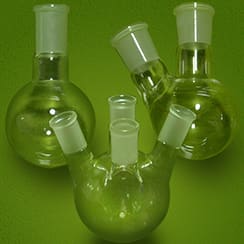
Cloning
Cloning It is a molecular biology technique wherein a selected sequence of DNA is cloned into multiple copies in a host organism (usually bacteria). A vector is required to introduce the DNA sequence of interest into the host. This vector in most cases is a plasmid (which is a non-chromosomal DNA which can replicate on its own). A modified plasmid DNA has an origin of replication which allows the plasmid to replicate using the host’s enzymes and an antibiotic resistance sequence which grants antibiotic resistance to the host organism. The Plasmids are treated with restriction enzymes (or restriction endonuclease) which cleave the plasmid DNA at a specific region called as the restriction sites (EcoRI, BamHI or HindIII are some restriction enzymes). This cleavage in most cases leads to the production of single-stranded sticky ends also called as cohesive ends or overhangs which can anneal with the foreign DNA which has also been cut with the same enzyme. This annealing process is also referred to as ligation/hybridization because it occurs with the action of DNA ligase. The plasmid is now known as a recombinant plasmid The bacterial cells (E. coli) which have been treated with calcium chloride to make them more permeable to DNA molecules are added to the recombinant plasmid mixture. By the process known as transformation (uptake of a foreign/exogenous genetic material from the surrounding) some amongst many bacterial cells take up the recombinant plasmid. These bacterial cells are poured onto the nutrient agar containing an antibiotic (ampicillin or neomycin). After incubation, this will result in the growth of only those cells which have taken the antibiotic resistance gene (these also happen to be the successfully transformed cells) The plasmid replication is independent of the host’s replication. However when host cells divide each of the daughter cells receives copies of plasmids. This results in the production of large copies of the recombinant plasmid. Kits are available for plasmid preparation, ligation, and plasmid purification or for all of the cloning procedures combined in one. Nucleic acid purification DNA purification and extraction Swiss Biologist Friedrich Miescher was the first person to isolate a DNA. The process refers to both extraction and purification of DNA from the given sample. The sample can be blood, swab, plant cells (like from a leaf), fruit, bacteria etc. A general protocol involves homogenization of cells using a physical method like the use of mortar and pestle. This may be followed by a series of chemical treatment with detergents like sodium laurel sulfate which pulls apart fats and proteins or using Chloroform followed by centrifugation where chloroform with unwanted cellular components settled down. A high temperature may be maintained to promote cell lysis. A buffer like tris-HCl or EDTA to maintain pH is used throughout. Ethanol or isopropanol is then used to precipitate out the DNA. Purification may involve many steps like the use of proteinase or phenol-chloroform extraction to eliminate protein impurities or RNAse to remove RNA Kits for extraction and purification of DNA from depending on the source are available.No Products


